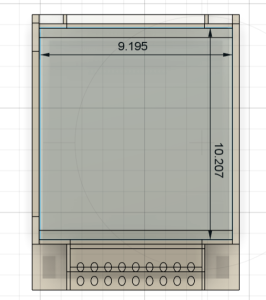A possible risk is that we are too late in the construction of the Visor that testing is pushed back. This could happen due to delays piling up in various parts of the project progression and pushing back our schedule. To manage this risk, we have been working on other parts of the project that may take longer than expected, earlier.
Another risk is that our PCB for our LoRaWAN gateway does not work due to design mistakes. A contingency plan is to simplify our communications stack to remove the LoRaWAN requirement. This allows us to simply buy another Adafruit Feather module that can transmit simple packets over LoRa without the LoRaWAN overhead.
No changes have been made to our design or our schedule.
Part A: Air quality regulation is not only a Pittsburgh problem, but an issue that many cities face, especially due to factors like vehicular transportation and existing industrial complexes. Our design is different from previous proposed and executed solutions to this problem in that we have a built-in mechanism to contain the air being sampled to lessen the negative effects that higher wind speed has on the accuracy of sensor measurements. While similar solutions have been implemented in other cities, they lack the wind speed mitigation that our product solution contains. Accurate air quality measurements are integral to addressing air quality issues and monitoring the state of spaces where people frequent and live, and our proposed solution is adaptable to use even outside of the Pittsburgh area.
Part B: By combining air quality monitoring with public bike share bicycles, air quality monitoring becomes a citizen-powered activity. By outlining the various air quality blind spots we have around the city, we bring into people’s minds the importance of air quality monitoring and air quality in general. We encourage riding bikes as a way to not only collect data, but also to reduce emissions associated with other modes of transportation. Eventually, SNIFF may be able to make people more aware of the importance of air quality, and therefore practice activities that aim to reduce harmful emissions. One of these may be to take public transportation and rely less on personal vehicles.
Part C: By having a better understanding of the local air quality due to filling the blind spots in air quality measurement in a city, any particularly polluted areas of a city could be both identified and corrected via targeted remedies allowing for a greater quality of life for all living organisms. With this increased density of air quality data due to distributed sensors, locations where natural resources can not be used or enjoyed due to elevated levels of air pollution can also be identified and corrected. This project directly measures the quality of the air in an environment and thus the data collected by this project deals directly with environmental factors. Specifically, we are collecting data to identify areas of the measured environment that are particularly harmful to living organisms and to present this information in an accessible format so that people can make informed decisions regarding their environment.





0 Comments